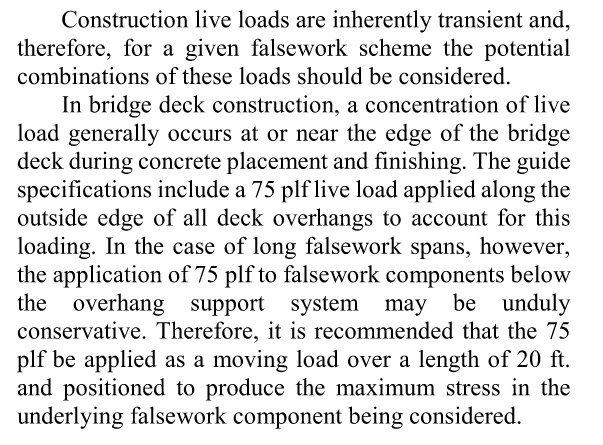Ron247
Structural
- Jan 18, 2019
- 1,052
When checking a bridge overhang construction bracket (EFCO SA-80 or Dayton C49 for example) I see a 75 plf load requirement on the end of a bridge overhang. I know it is not related to the screed wheel loads but does anyone know what it is for? I am told the requirement is from AASHTO.
Seems high for a handrail, so there must be some other item it is modeling.
Thanks in advance.
Seems high for a handrail, so there must be some other item it is modeling.
Thanks in advance.

![[idea] [idea] [idea]](/data/assets/smilies/idea.gif)
